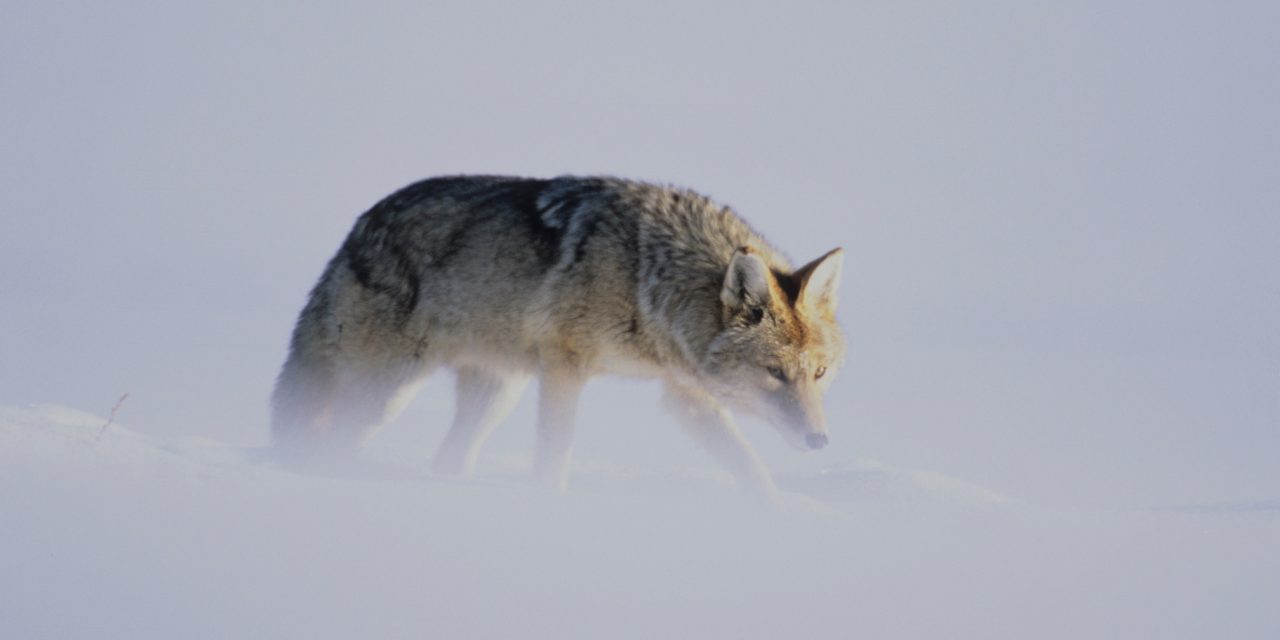The coyote is often described as the most vocal of North America’s mammals. While there’s a lot of overlap in the sounds that coyotes, dogs and other canid species make—from startled huffs to whines of greeting, and from antagonistic growls to barks of alarm—coyotes take “language” to whole other level. In fact, the scientific name for the coyote is Canis latrans, which translates to “barking dog.” Commonly, the coyote is known as the “song dog.”
If you’ve ever heard a group howl by a pack of coyotes, you’ll know why. Rather than the soul-haunting, drawn-out sound of a wolf’s howl, a coyote’s howl is characterized by high-pitched barks and yips, with each song consisting of a lot of lyrics. And, coyote songs can be loud. Researchers have speculated that the intensity and volume of the vocalizations may also have meaning.

When coyotes howl, they give the impression that their pack is larger than it is. ©From the video “Coyote Pack Howl” by Trailcampro.com
Coyotes probably are living right alongside you, whether you hear them or not. When people do hear their howls, they often mistakenly assume the sounds are coming from a large pack of animals, all raising their voices at once. That may be the coyotes’ intent. When coyotes howl, they sound like a bigger pack than they really are. They accomplish this feat by utilizing a smart strategy: combining wavering howls with a rapid change in pitch. And, by bouncing their howls off objects in the environment—such as rocks, trees or the far side of a valley—two or three coyotes can sound like a pack of ten or more, which would make them seem much more formidable to any nearby competitors or predators.

Coyote attacks on humans are uncommon and rarely cause serious injuries. Yet, historically, we haven’t regarded coyotes very favorably. ©John T. Andrews
Historically, coyotes have been vilified. There may be some evidence that today that is finally changing. I hope that we will start to appreciate coyotes for the intelligent, complex and language-rich animals that they truly are.
Watch the trail-cam video below, in which coyotes send up a group yip-howl. Usually, a dominant member of the pack starts such choruses. That seems to be the case here, as the coyote you’ll see joins in after another coyote begins the howl.
I warn you, however, to turn your speakers WAY down (and avoid headphones) before starting the video. It’s loud.
Here’s to finding your true places and natural habitats,
Candy




































Wow… your right.
They sound like Lila.
I live in the foothills of the western North Carolina mountains, and here everyone wants to kill the coyotes. It seems like trying to explain to people that coyotes serve a purpose in nature’s world is fruitless. Nature is something we are losing at an alarming rate here, and all over the Carolinas. I am not a wildlife expert by no means, but it only takes a little time of observing to see what’s vanishing right before our eyes.